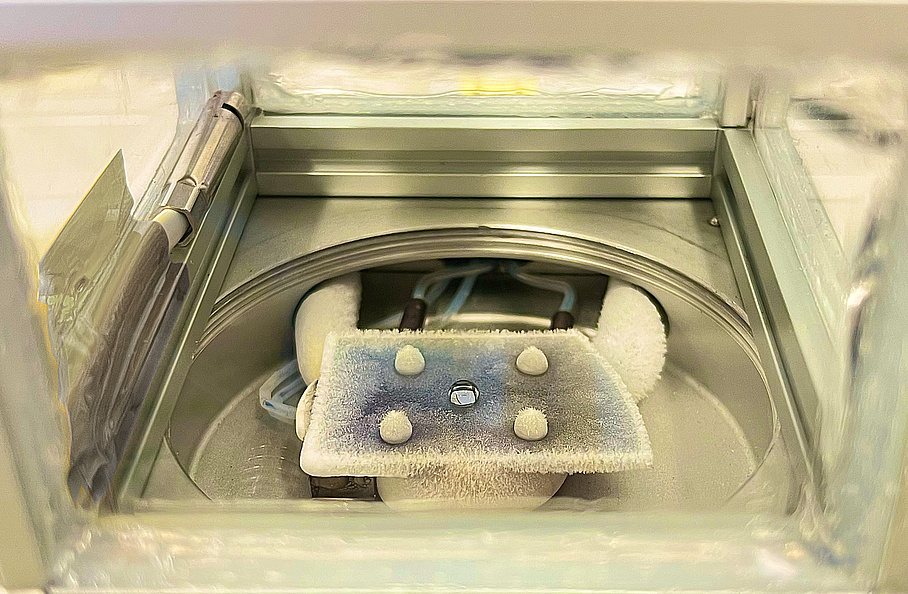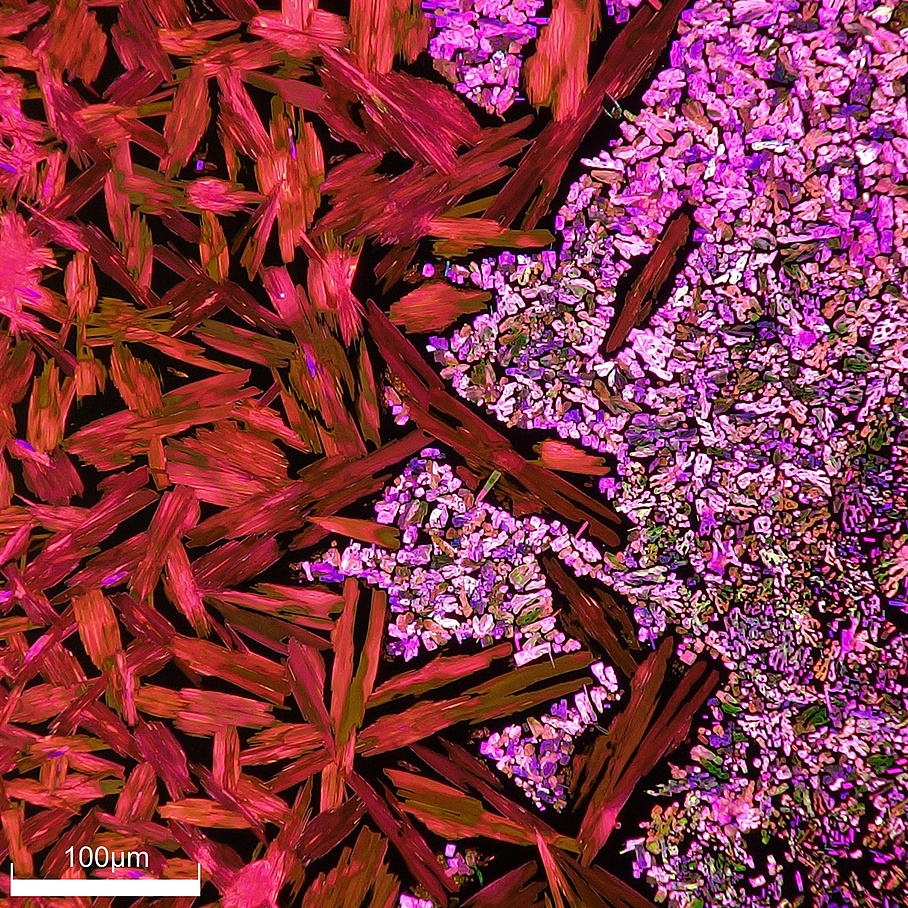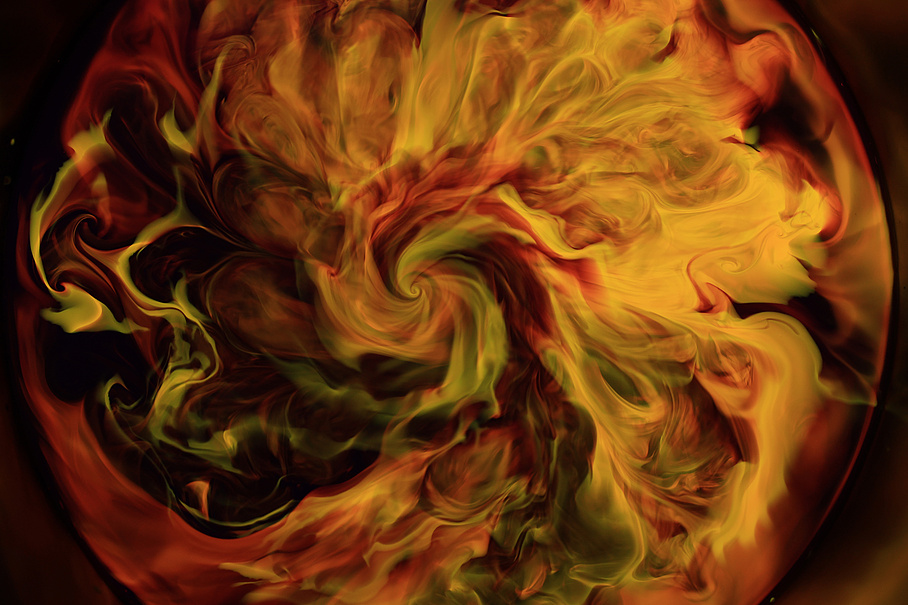A cold, slow, and imminant fate
Gabriel Hernandez-Rodriguez, Institute of Solid State Physics
Icing is an imminent phenomenon, and yet we are determined to stop it. But why? Because anti-icing materials would have a tremendous positive impact on how we experience daily life during cold environments. However, the field is still unexplored and full of big obstacles. But in TU Graz we are up to the challenge! We are working on these fascinating materials and unraveling the driving mechanism of these properties.
A colorful world: Perylenes in Thin Layers
Bettina Schlemmer, Institute of Chemistry and Technology of Materials
The light microscope image in polarization mode shows a thin layer of a dye used for organic solar cells. This germanium-functionalized perylene diimide crystallizes in different sizes and orientations.
Proton whirlpool of enlightenment
Sergey Borisov, Institute of Analytical Chemistry and Food Chemistry
An acid is added under stirring into the solution of an indicator dye and the yellow fluorescence is gradually “switched on” as the non-fluorescent form of the dye gets protonated. Such dyes are essential components of luminescent sensors.
Chromatic Flow: Course of Colorful Photocatalysis
Alessia Valotta and Julia Maderbacher Institute of Process- and Particle Engineering
In a continuous photocatalytic reactor, light is used as a resource to sustainably produce precursors for active pharmaceutical ingredients. The resulting color gradient of the fluid makes the progress of the reaction directly visible.




